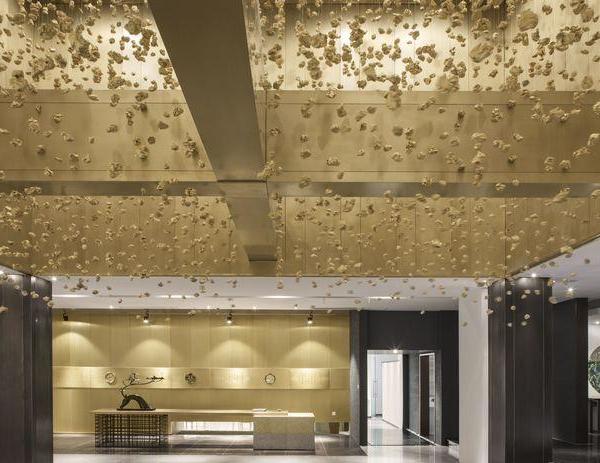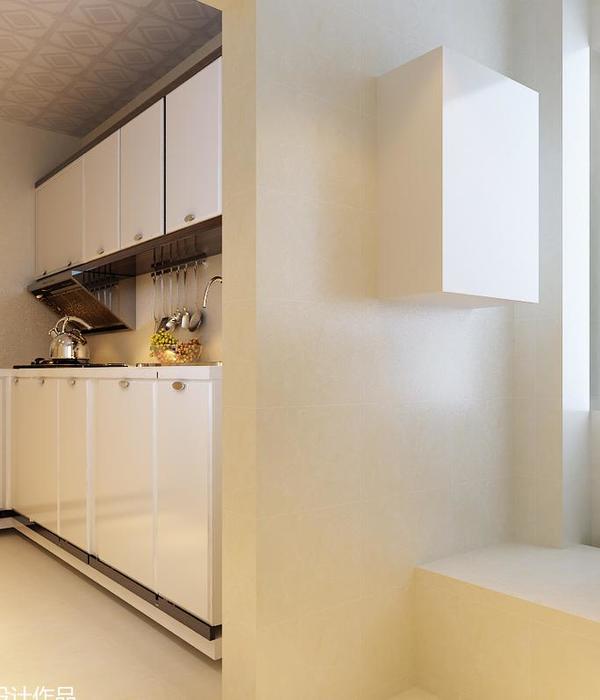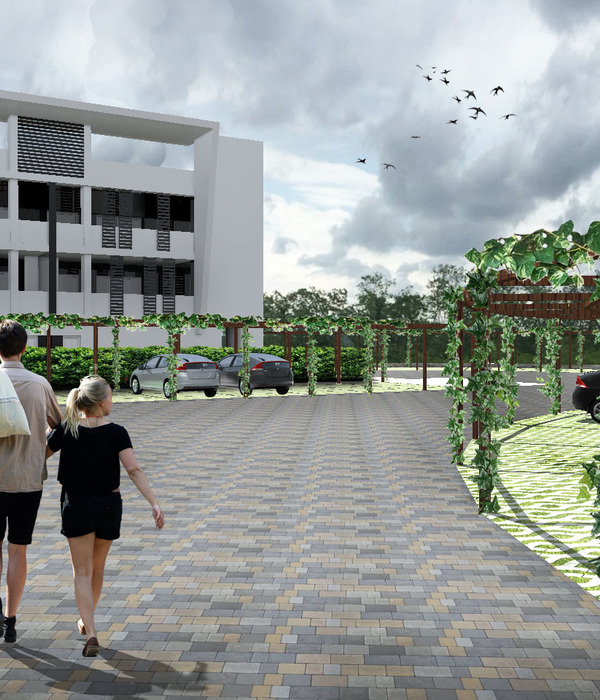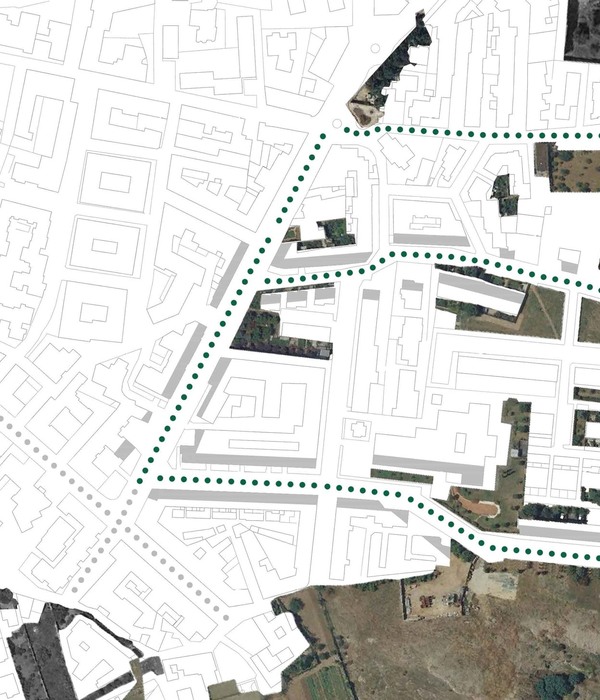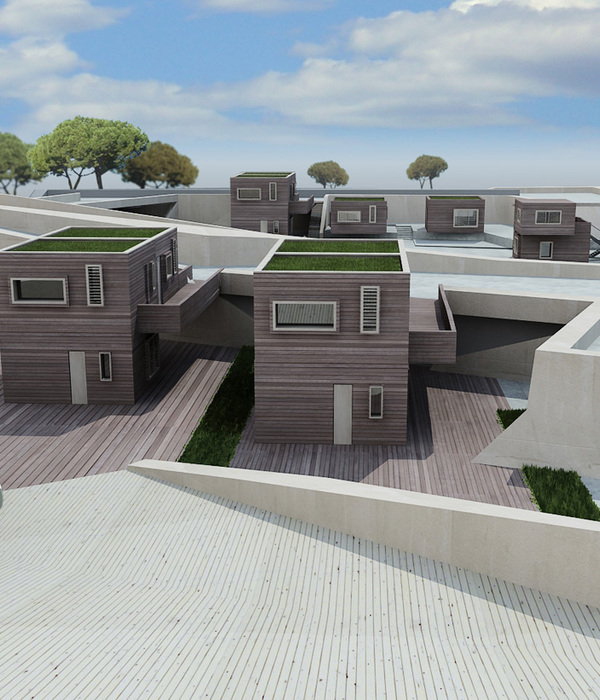"这是一个校园的整体规划方案,却从很大程度上融入了当地的文化。" – 2018 年评审委员会
"It was a campus masterplan, but it went very much into the culture of the place." – 2018 Awards Jury
威斯康星大学麦迪逊分校占地 936 英亩,位于麦迪逊市和 Mendota 湖之间。学校成立于 1848 年,是全州最古老和最具规模的大学,拥有超过 4.5 英里的海岸线,同时融合了优秀且多样的文化、历史、自然和城市景观。学校在过去和未来的发展举措促使着管理方法的改进和变革。
作为校园整体规划的一部分,该项目将传统的校园景观规划方法与以性能为主导的绿色基础设施设计方法相结合。在认识到校园与湖泊在未来健康方面的共存关系之后,这一创新性的规划方案立足于一个有着丰富历史和文化的景观网络,使雨水管理和水质得到了显著且重大的改善。
作为大学历史中第一次以景观为重点的整体规划,该项目还为校园中将公共景观和性能景观相结合的综合开发设定了新的国家标准,从而为其他的学术机构提供了具有前瞻性的、可效仿的基准案例。
威斯康星大学麦迪逊分校校园景观和绿色基础设施整体规划旨在满足一系列挑战性的目标:1.保护并改善开放空间,同时创造新的集会空间。 .维护湖岸自然保护区内的土地,使其作为未经开发的自然区域为学校的教学、研究和拓展提供支持。 .保护和增强既有的历史文化景观、方院以及庭院。 .建立开放空间的设计原则,以指导校园的成长和可持续发展。 .提供一个能够同时促进身体、情感和心理健康的校园环境。 .提高校园作为活跃的教育、学习和研究实验室的综合能力。 .加强校园与 Mendota 湖及其广阔流域之间的联系。学校还需要面对新制定的州及联邦水质法规,它们要求罗克河流域的市立和州立机构大幅度地减少每日最大总负荷(TMDL)。大规模的绿色基础设施建设是实现该目标的一项重要举措。考虑到大学在环境和生态保护方面的传统,研究小组将校园景观视为一个“活着的”实验室,同时提出了以下“重大问题”:如何建立一个综合性的景观框架,使其能够保持大学的历史核心,增强整个校园的质量和特色,更好地连接社区与 Mendota 湖,同时为改善环境管理建立一套严格的、可量化的标准?
问题的答案在于对公共景观和性能景观的创造性整合,为保护和改善校园大量的户外空间建立一种全面的方法体系。绿色基础设施的性能已经远远超出了管理措施的建议标准,它以校园的规模和尺度为基准,确立了一系列相互关联的景观改善手段。
多样化的团队和稳健的工作方法
该项目的团队是一个由景观设计师领导的、由规划师、城市设计师、土木工程师、海滨工程师、机电工程师、交通工程师、生态学家、地理学家、历史学家和考古学家组成的多元团队。他们采用的设计方法参考了校园整体更新计划中提出的发展方案,反映了对校园美学、生态和景观性能在接下来 20 多年里的高度期望。
长达两年的集中规划过程充分展现了大学在决策共享和决策透明方面的稳固传统。项目团队建立了一个互动性的在线参与网站,与数百名利益相关方(包括社区居民、学生、教师、员工、各市及各州官员)进行了超过 250 次会议。
团队还与学校所在的水域负责方进行了密切合作,通过减少总悬浮固体(TSS)和总含磷量(Phosphorous)来改善水质。通过量化地分析既有的校园景观和基础设施如何对总悬浮固体的含量形成影响,团队制定了一个结构性的时间表,以尽可能地超过由威斯康星州自然资源部和美国环境保护署制定的关于最大总负荷(TMDL)的新规定。
对于客户和项目团队来说,项目过程中的一件无法忘却的事情是首席景观设计师的突然离世。他是一位具有远见卓识和极高专业度的大师和行业领导者。毫无疑问地,这项规划将承载着逝者的美好声誉继续向前推进,其目的不仅自安于改善自然景观,还在于改善自然景观与人类社会之间的关系。
严格的分析,清晰的执行
团队花费了超过一年的时间,利用 GIS 和各种雨水处理建模程序来进行技术分析,以开展大学迄今为止最全面的一次水域研究。这项分析帮助团队为未来以性能为基础的校园景观制定了清晰的发展流程,使其能够远远赶超水质法规所要求的标准。团队还为降低既有校园绿色基础设施的径流进行了建模和量化,为规划中的建议提供了有效的基准。
校园整体的景观框架和类型学规划是基于三个以场所为中心的区域而实施的,每个区域均以提高校园辨识度、改善开放空间以及增强连性为指导目标。规划团队对每个区域中将要打造的建筑、开放空间、停车场和道路进行了分析,明确了它们将对校园景观和未来水质产生的影响。绿色基础设施通过可收集多场地径流的目标区域得以确定下来,能够为每一笔的花费提供最大的收益。随后,团队还列出了一份针对特定地点实施的项目及其预期成果(TSS 捕获和地下水补给等)的菜单,并将绿色基础设施的改善计划与对具有历史和文化内涵的景观的保存和恢复相结合,为景观的改善提供了整体性的指导。
计划更新了大学的雨水处理标准,以确保所有的新增设施都能够为实现校园的可持续发展目标作出贡献。建议还提出推进景观维护实践,以优化绿色基础设施的性能表现,最大程度地保持校园径流的清洁度,具体体现在道路清扫、积雪和落叶收集以及废弃地区的分流和隔离等。
恢复,连接和连续性
团队采用“绿色分区”的方法,将传统校园景观规划的目标与绿色基础设施的性能设计相结合。其中针对历史悠久的 Observatory Hill 的计划体现了该方案在整合校园景观肌理的标志性区域以及文化和环境敏感区域上的宏观思路。
朝向湖面的视野带来了该区域最为戏剧
▲校园环境:威斯康星大学麦迪逊分校占地 936 英亩,拥有超过 4.5 英里的海岸线,介于麦迪逊市和 Mendota 湖之间,同时也坐落在悠久的历史和经久不衰的文化遗产之间。
Campus Context: With over 4.5 miles of shoreline, the University of Wisconsin-Madison’s 936-acre campus occupies a vital intersection between the capital city and Lake Mendota, and between the institution’s long history and enduring legacy.
▲文化景观分析:规划团队细致地评估并调研了标志性的文化景观,它们在过去 100 年中塑造了大学的身份认同感以及与公众的联系。Cultural Landscape Analysis: The planning team carefully evaluated and mapped the iconic cultural landscapes that have shaped the university’s sense of identity and public connection over the past 100 years.
▲历史景观的分析与保护:威斯康星大学麦迪逊分校的校园景观与人类历史息息相关,可追溯至 12000 多年前。大学还拥有比世界上其他任何大学都更多的考古丘地。
Historical Landscape Analysis & Preservation: UW-Madison’s campus landscape is embedded with a human history that dates back over 12,000 years and contains more effigy burial mounds than any university in the world.
了解区域影响:新制定的州及联邦水质法规要求大幅减少罗克河流域的每日最大总负荷(TMDL)。整体规划对校园的总悬浮固体(TSS)来源进行了量化,并确定了在区域内实现减排所需要建立的合作关系。Understanding Regional Impact: New state and federal water quality regulations require significant reductions in TMDL within the Rock River Watershed. The planning process quantified sources of campus TSS and identified the partnerships needed to achieve reductions at a regional scale.
▲流经区域:团队利用 GIS 和各种雨水处理建模程序来进行技术分析,开展了大学迄今为止最全面的一次水域研究。Watershed Districts: Extensive technical analysis was conducted using GIS and various stormwater modeling programs to develop the most comprehensive watershed studies the university has ever completed.
▲针对区域建立目标:结合严格的校园景观分析和流域分析,整体规划基于三个以场所为中心的区域而实施,每个区域均以提高校园辨识度、改善开放空间以及增强连性为指导目标。
District-Based Objectives: Synthesizing the rigorous campus-wide landscape and watershed analyses, the master plan grounded its recommendations within three place-based districts, each with a guiding goal for improved campus identity, open space and connection.
▲综合性的规划愿景:不同于大学通常制定单独的景观和雨水管理方案的做法,威斯康星大学麦迪逊分校通过与整体校园相融合的大规模规划工作,展现出其在高校中的领导地位。
Integrated Planning Vision: While universities typically develop separate landscape and stormwater management plans, UW-Madison is leading the charge in higher education by developing one of the first joint plans fully integrated with the institution’s larger campus master planning efforts.
▲可量化的性能:绿色基础设施的性能已经远远超出了管理措施的建议标准,它以校园的规模和尺度为基准,确立了一系列相互关联的景观改善手段。
Measurable Performance: The high-performing green infrastructure recommendations go well beyond a menu of isolated site BMPs to identify a series of interrelated landscape improvements modeled and quantified at a campus scale.
▲专注恢复:针对历史悠久的 Observatory Hill 的计划体现了该方案在整合校园景观肌理的标志性区域以及文化和环境敏感区域上的宏观思路。Focus on Restoration: The recommendations for historic Observatory Hill exemplify the plan’s overall restoration approach to iconic but culturally and environmentally sensitive areas of the campus landscape fabric.
▲完善道路:新的南部校园网格重新定位了传统的方院和街道,使其成为一个集成的开放空间系统,能够对微气候做出回应、过滤雨水并建立起一种不再由沥青和混凝土来定义的区域特征。
Completing Streets: The new south campus grid reorients traditional quads and streets so they work as an integrated open space system that responds to microclimate, filters stormwater, and establishes a district identity no longer defined by asphalt and concrete.
▲教育++ 生态改善:柳溪的“绿色区域”计划在未来将着重于保护历史景观、创建教育景观、大规模改善生态环境以及减少总悬浮固体(TSS)。
Educational + Ecological Enhancement: Planned future development and new athletic fields in the Willow Creek“Green District”were leveraged for historic landscape preservation, educational landscape creation, extensive ecological enhancement and significant gains in TSS reductions.
▲提升校园形象和辨识度:整体规划希望将柳溪与校园肌理重新连接起来,以显著改善学生的生活、优化自然栖息地,同时强调校园的身份特征。
Enhancing Campus Image & Identity: The plan’s vision for a restored Willow Creek reconnects it to the campus fabric in ways that will measurably enhance student life, natural habitat and institutional identity.
▲全流域的公众参与:威斯康星大学麦迪逊分校已经成为“Yahara 湖流域的适应性管理”中的一部分,该计划由数十个政府部门和机构共同推进,主要针对减少城市和非城市污染源的问题。
Public Engagement at a Watershed Scale: UW-Madison is now part of Adaptive Management in the Yahara Lakes Watershed, a program including dozens of municipalities and agencies partnering together to reduce urban and non-urban sources of pollution.
The UW-Madison Campus Landscape and Green Infrastructure Master Plan was developed to meet a challenging range of institutional goals:1.Protect and enhance open spaces and create new gathering spaces.
2.Maintain lands in the Lakeshore Nature Preserve as undeveloped natural areas that support teaching, research and outreach.
3.Protect and enhance known historical cultural landscapes, quadrangles and courtyards.
4.Establish open space design principles to guide growth and sustainable development on campus.
5.Provide a campus environment that supports physical, emotional and psychological well-being.
6.Enhance the campus as a living laboratory for teaching, learning and research.
7.Strengthen the campus connection to Lake Mendota and its larger watershed.
The University was also facing new state and federal water quality regulations requiring significant reductions in the Total Maximum Daily Loads (TMDL) for municipalities and state institutions within the impaired Rock River Watershed. Extensive green infrastructure development would be needed to achieve these reductions. Given the University’s legacy of environmentalism, preservation and ecology, the team approached the campus landscape as a living laboratory and posed this Big Question:How do you create an integrated landscape framework that preserves the University’s historic core, elevates the quality and identity of the overall campus, better connects the entire community to Lake Mendota and establishes rigorous, measurable standards for improved environmental stewardship?
The answer lies in the plan’s unique integration of public and performance landscapes, which establishes a comprehensive approach for preserving and enhancing the great outdoor spaces of the University. The green infrastructure analysis goes well beyond recommending a menu of isolated site BMPs to identifying a series of interrelated landscape improvements modeled at a campus scale.
Landscape architects led a wide-ranging, investigatory team of planners; urban designers; civil, waterfront, mechanical and traffic engineers; ecologists; geographers; historians and archaeologists. This diverse team applied a methodology that accounts for all campus development proposed in the overall Campus Master Plan Update, reflecting the highest aspirations for campus aesthetics, ecology and landscape performance over the next 20 years.
UW-Madison’s robust tradition of shared decision-making and transparency was evident in the intensive planning process spanning over two years. The team implemented an interactive online engagement portal and facilitated over 250 meetings with hundreds of stakeholders including neighborhood residents, students, faculty, staff, and City and State officials.
The team also worked closely with UW-Madison’s regional watershed partners to address the improvement of water quality by reducing Total Suspended Solids (TSS) and Total Phosphorous. Based on a data-informed, quantified analysis of how all existing campus landscapes and infrastructure are contributing to TSS, the team crafted a plan with a structured timeline to exceed the new TMDL regulations enforced by the Wisconsin Department of Natural Resources and the United States Environmental Protection Agency. Review with the City established a joint framework for funding and implementing urban-scale green infrastructure moving forward.
A unique, galvanizing moment for the client and project team came with the sudden death of the lead landscape architect—a national leader, visionary and master of his craft within the profession. It was determined that the plan would move forward in our lost colleague’s honor, and strive to enhance not only the landscape proper, but also its relationship to the human condition.
The team spent over a year on technical analysis using GIS and various stormwater modeling programs to develop the most comprehensive watershed studies the University has ever completed. This analysis helped the team chart a clear course for the future of performance-based landscapes on campus, putting the University well out in front of meeting water quality regulations. The team also modeled and quantified the runoff reduction benefits of the existing campus green infrastructure to establish an effective baseline for plan recommendations.
The campus-wide landscape framework and typology plans ground recommendations within three place-based districts, each with a guiding goal for improved campus identity, open space and connection. For each district, the planning team analyzed the impacts that proposed building, open space, parking, and roadway projects would have on the campus landscape and future water quality. Green infrastructure sites were identified by targeting areas where multi-site runoff tributaries could be collected and treated to provide maximum benefits for every dollar spent. Next, a menu of site-specific practices and their intended outcomes (TSS capture, groundwater recharge, etc.) was assessed on a block-by-block basis across the entire campus. Proposed green infrastructure improvements were integrated with the preservation and restoration of culturally and historically significant landscapes, providing a holistic guide for landscape improvements.
The plan updates University stormwater standards to ensure that all new development and construction projects contribute towards campus sustainability goals. Recommendations also promote landscape maintenance practices to enhance GI performance including street sweeping, snow
{{item.text_origin}}

